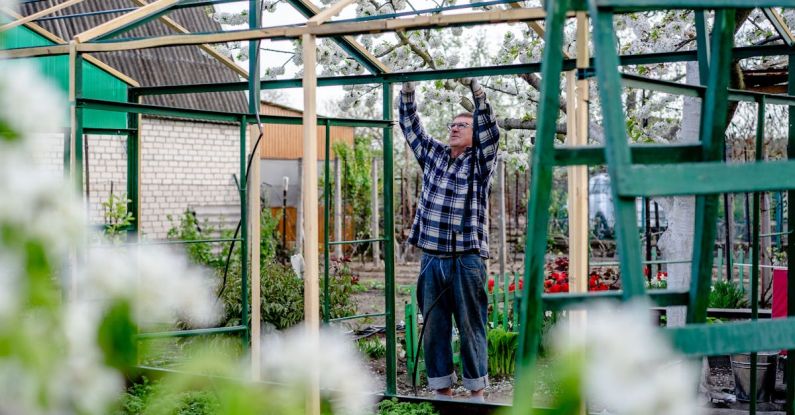Build a Composite Greenhouse: Diy Tips for Gardeners
Gardening enthusiasts understand the importance of having a greenhouse to extend the growing season and protect delicate plants from harsh weather conditions. While purchasing a pre-made greenhouse is an option, building a composite greenhouse from scratch can be a rewarding project that allows for customization and creativity. With the right tools and materials, DIY gardeners can construct a durable and efficient greenhouse that suits their specific needs. Here are some tips for building a composite greenhouse that will enhance your gardening experience.
Choosing the Right Location
Before starting your greenhouse project, it’s crucial to select the right location for optimal sunlight exposure and accessibility. Place your greenhouse in an area that receives plenty of sunlight throughout the day, preferably facing south to maximize sun exposure. Ensure that the location is level and easily accessible for watering, maintenance, and harvesting. Additionally, consider the proximity to water sources and electricity if needed for heating or lighting.
Selecting the Materials
When building a composite greenhouse, choosing the right materials is essential for durability and efficiency. Composite materials such as fiberglass, polycarbonate, or PVC offer durability, insulation, and light transmission suitable for greenhouse construction. These materials are lightweight, weather-resistant, and easy to work with, making them ideal for DIY projects. Additionally, consider using recycled materials or reclaimed wood to minimize environmental impact and reduce costs.
Designing the Structure
Before constructing your composite greenhouse, it’s essential to have a well-thought-out design plan. Consider factors such as the size of the greenhouse, ventilation requirements, shelving or benches for plants, and the type of plants you intend to grow. Utilize online greenhouse design tools or consult with experienced gardeners to create a functional and aesthetically pleasing structure that meets your needs.
Building the Frame
The frame of your composite greenhouse serves as the foundation for the structure and provides support for the covering material. When constructing the frame, ensure it is sturdy and able to withstand wind, snow, and other weather conditions. Use pressure-treated lumber or composite materials for the frame to prevent rot and prolong the lifespan of your greenhouse. Consider incorporating additional support beams or braces for added stability, especially if you live in an area prone to strong winds or heavy snowfall.
Installing the Covering Material
The covering material of your composite greenhouse plays a vital role in regulating temperature, light transmission, and humidity levels inside the structure. Transparent materials such as polycarbonate panels or fiberglass allow sunlight to penetrate while providing insulation and protection from UV rays. Secure the covering material to the frame using appropriate fasteners and sealants to prevent drafts, leaks, or damage during inclement weather. Consider adding adjustable vents or windows for ventilation control and temperature regulation.
Adding Finishing Touches
Once the main structure of your composite greenhouse is complete, it’s time to add finishing touches to enhance functionality and aesthetics. Install shelving, benches, or hanging baskets for plant storage and organization. Incorporate a watering system, heating source, or lighting fixtures as needed to create an optimal growing environment for your plants. Personalize your greenhouse with decorative elements such as paint, trim, or landscaping to make it a unique and inviting space for gardening activities.
Maintaining Your Greenhouse
After completing your composite greenhouse, regular maintenance is essential to ensure its longevity and efficiency. Inspect the structure for any signs of damage, wear, or leaks and make necessary repairs promptly. Clean the covering material regularly to remove dirt, algae, or debris that can obstruct sunlight and reduce light transmission. Monitor temperature and humidity levels inside the greenhouse and adjust ventilation or heating accordingly to create an ideal growing environment for your plants.
Enjoying the Fruits of Your Labor
Building a composite greenhouse is a rewarding project that allows gardeners to extend the growing season, cultivate a wider variety of plants, and enjoy fresh produce year-round. By following these DIY tips and incorporating your creativity and personal preferences, you can construct a functional and beautiful greenhouse that enhances your gardening experience. Whether you are a novice gardener or seasoned horticulturist, a composite greenhouse provides a versatile and sustainable solution for growing healthy and vibrant plants in any climate. Embrace the opportunity to build and customize your greenhouse, and reap the benefits of a thriving garden filled with life and beauty.






